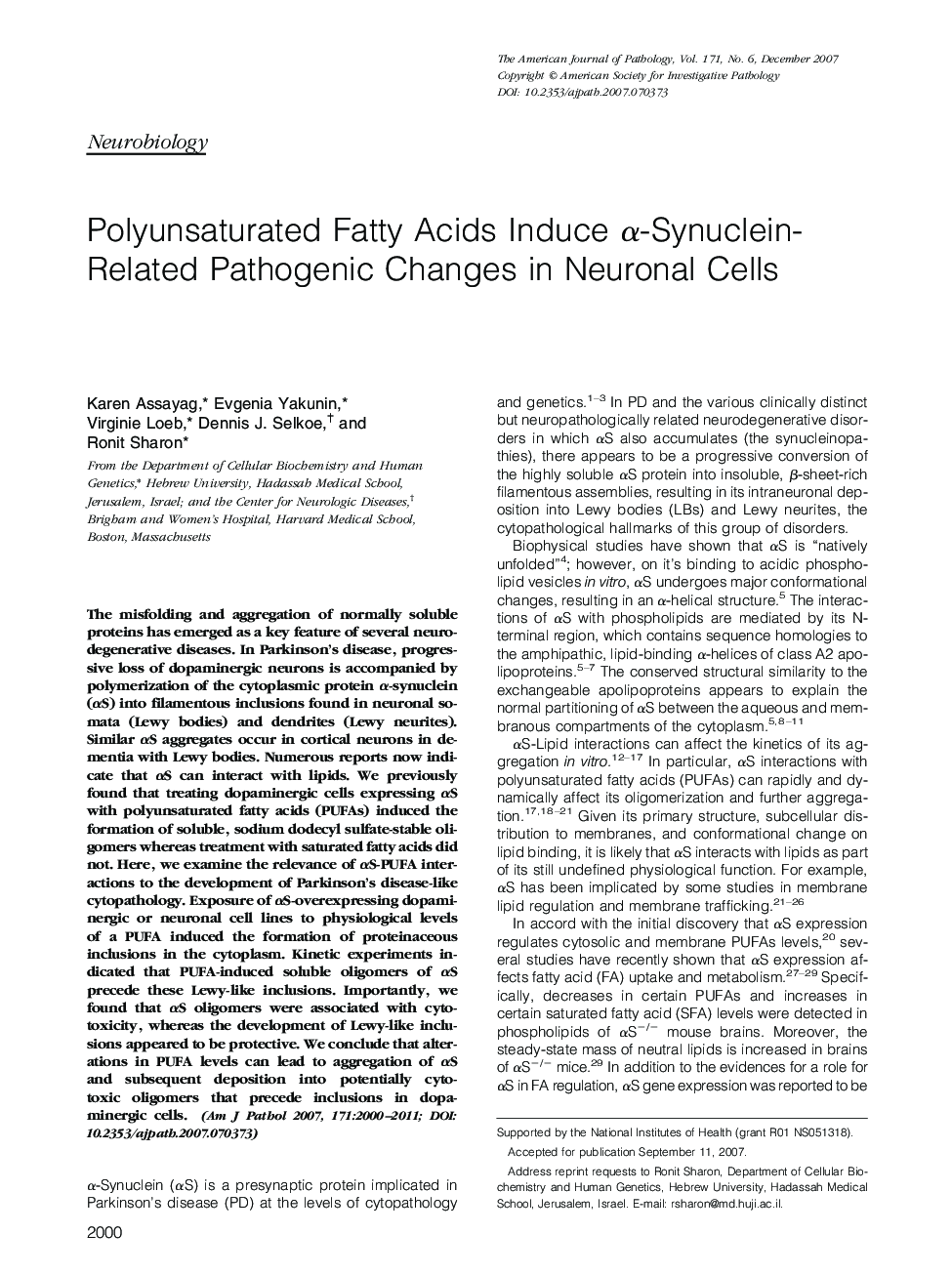| کد مقاله | کد نشریه | سال انتشار | مقاله انگلیسی | نسخه تمام متن |
|---|---|---|---|---|
| 2866021 | 1573471 | 2011 | 12 صفحه PDF | دانلود رایگان |

The misfolding and aggregation of normally soluble proteins has emerged as a key feature of several neurodegenerative diseases. In Parkinson's disease, progressive loss of dopaminergic neurons is accompanied by polymerization of the cytoplasmic protein α-synuclein (αS) into filamentous inclusions found in neuronal somata (Lewy bodies) and dendrites (Lewy neurites). Similar αS aggregates occur in cortical neurons in dementia with Lewy bodies. Numerous reports now indicate that αS can interact with lipids. We previously found that treating dopaminergic cells expressing αS with polyunsaturated fatty acids (PUFAs) induced the formation of soluble, sodium dodecyl sulfate-stable oligomers whereas treatment with saturated fatty acids did not. Here, we examine the relevance of αS-PUFA interactions to the development of Parkinson's disease-like cytopathology. Exposure of αS-overexpressing dopaminergic or neuronal cell lines to physiological levels of a PUFA induced the formation of proteinaceous inclusions in the cytoplasm. Kinetic experiments in-dicated that PUFA-induced soluble oligomers of αS precede these Lewy-like inclusions. Importantly, we found that αS oligomers were associated with cyto-toxicity, whereas the development of Lewy-like inclusions appeared to be protective. We conclude that alterations in PUFA levels can lead to aggregation of αS and subsequent deposition into potentially cyto-toxic oligomers that precede inclusions in dopa-minergic cells.
Journal: The American Journal of Pathology - Volume 171, Issue 6, December 2007, Pages 2000–2011